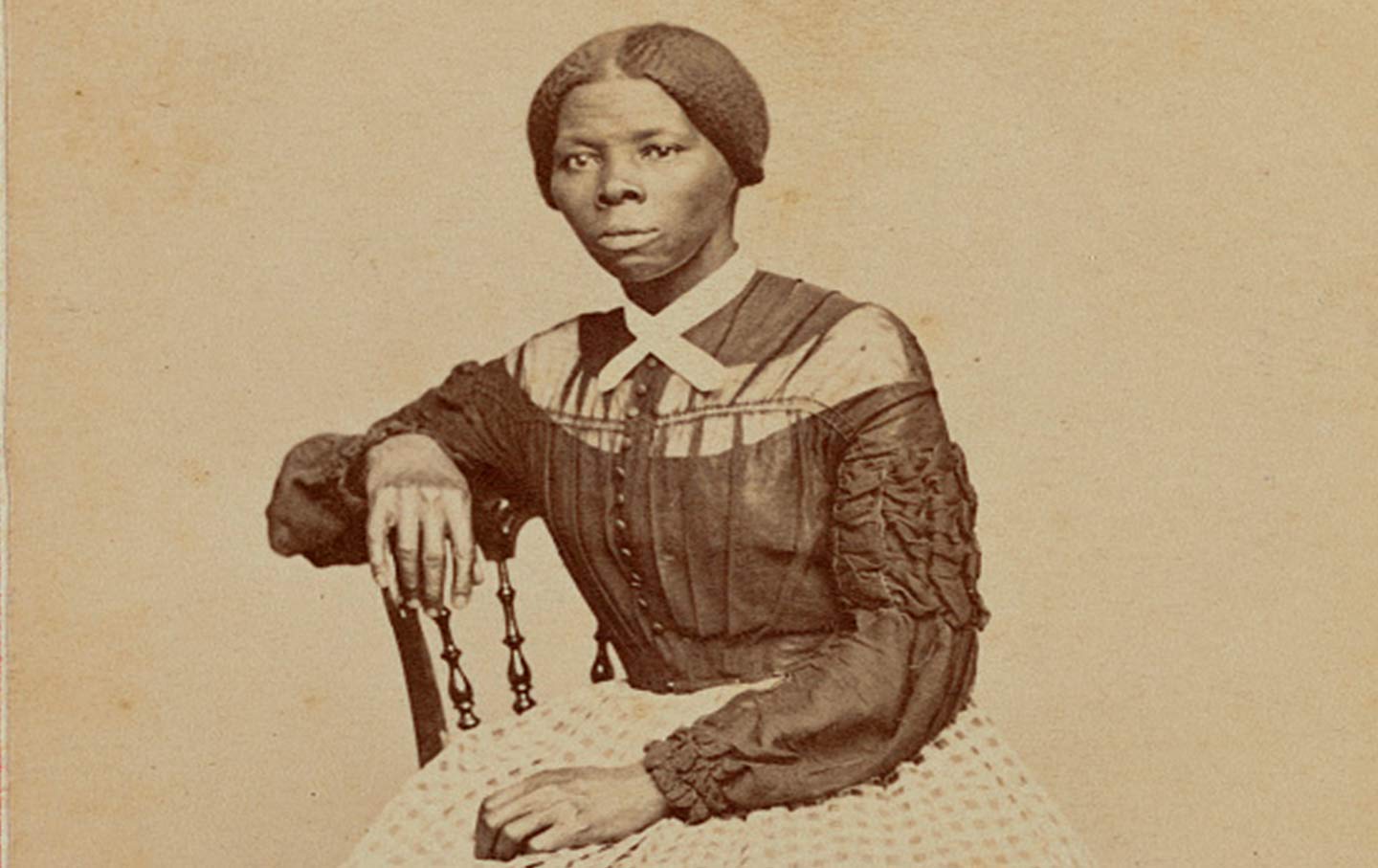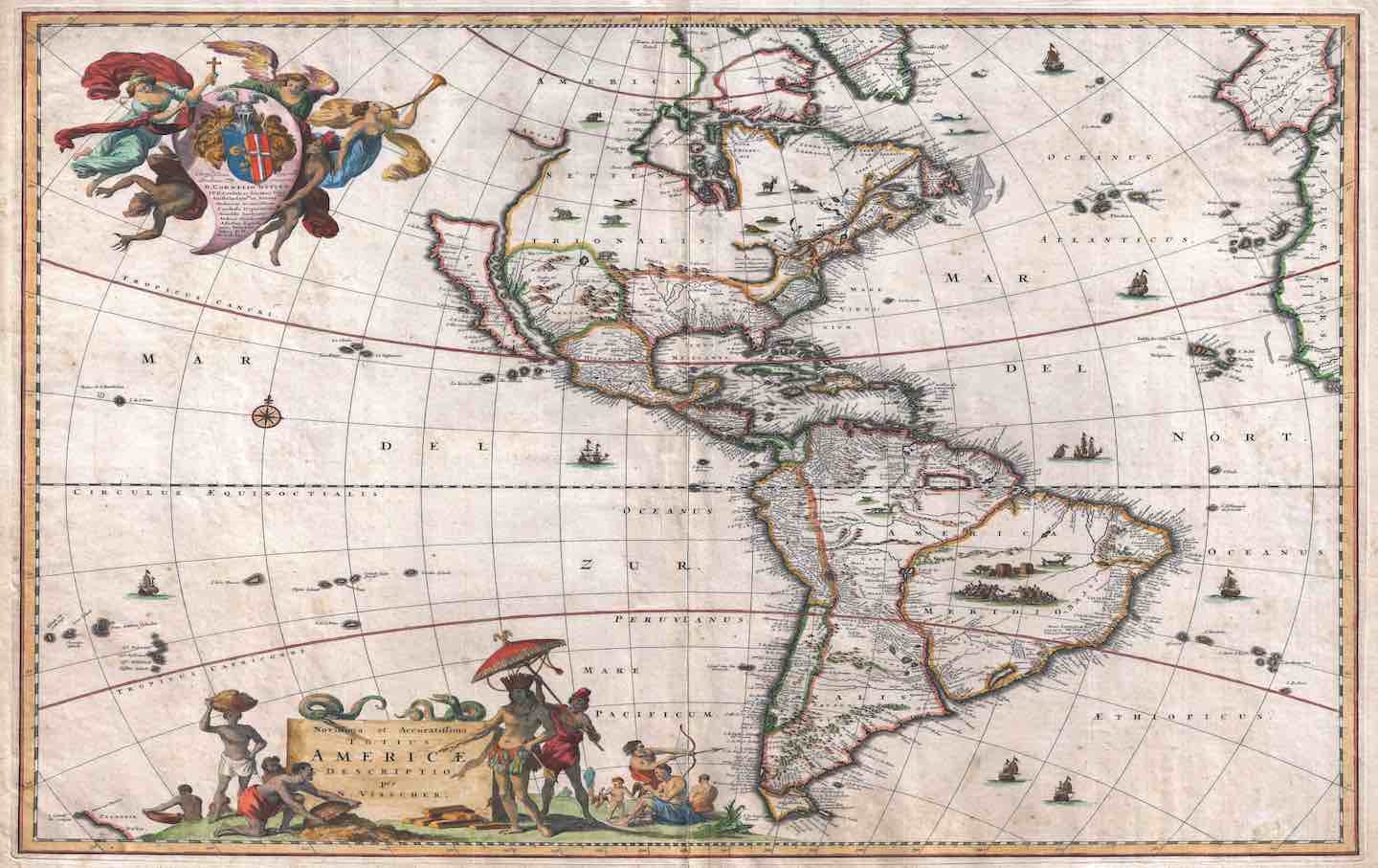Righteous Ends
The radical life and times of Harriet Tubman
The Many Lives of Harriet Tubman
Tiya Miles’s Night Flyer is a landmark biography of one of 19th-century America’s most important figures.

Harriet Tubman in 1868 or 1869.
(Benjamin Powell / Library of Congress)
Every American seems to know the name and even story of Harriet Tubman. But do they? In spite of her stature and importance in American history, she seemed to have been ignored during much of the 20th century. In 2003 and 2004, six decades after the last major study of her life and times was published, readers got not one but two biographies: Catherine Clinton’s Harriet Tubman and Kate Clifford Larson’s Bound for the Promised Land.
Books in review
Night Flyer: Harriet Tubman and the Faith Dreams of a Free People
Buy this bookSince then there have been countless children’s books and several shorter books on Tubman, or books that examine particular episodes in her life. But these these three groundbreaking books have remained the staples for anyone who wants to know more about one of the most famous Americans in history. However, three books, or even dozens, cannot truly convey the formidable person that Tubman was or the radical and emancipatory times she lived in. Our heroes require constant revision—especially one who had such a long and eventful life: Tubman lived to be in her 90s, and during her lifetime she worked to dismantle slavery, served courageously during the Civil War, advocated for women’s suffrage and equality, and cared deeply for the poor and marginalized.
Now the award-winning historian Tiya Miles has made Tubman the subject of her ninth book, Night Flyer: Harriet Tubman and the Faith Dreams of a Free People. Miles’s biography is timely for a number of reasons. First, this is an election year, and nothing compels Americans to rethink the past like a presidential election. But more important, her new book fits within a larger turn among historians trying to move biography beyond the traditional cradle-to-grave narrative. In biographies on everyone from Merze Tate and Mollie Moon to Shirley Chisholm, scholars like Barbara D. Savage, Tanisha C. Ford, and Anastasia C. Curwood have sought to expand the scope of their narratives, extending them well beyond the life of a single person to consider the larger social worlds that shaped them and that they, in turn, helped to shape.
Night Flyer is unusual in another way, too. Tubman was not literate. She left no papers or diaries that could give us a fuller picture of her inner life, ideas, and experiences. Accordingly, all of her biographers have had to do careful and creative work to find the meaning in the silences often dismissed by their field. The discipline of history privileges the literate and the archival, which makes it easy for enslaved women to be marginalized even within their own stories. In Night Flyer, Miles illustrates what deft scholars can do to recover these stories.
For example, in Night Flyer, Miles shows us how, along with being an abolitionist, a suffragist, and a Civil War hero, Tubman was “arguably the most famous black woman ecologist in US history.” Miles understands Tubman as a woman who had meaningful connections to and deep knowledge of her environment and its surrounding natural habitats. She valued the complexity and utility of plants, animals, trees, soil, and the stars. The picture of Tubman as an illiterate woman often prevents people from seeing her skillfulness, intelligence, and wit. In Miles’s rendering, Tubman was also a spiritual woman, one who did not separate her religious beliefs from the natural world. Tubman’s story is one of faith and how God used nature to instruct her. The material and divine worlds were not mutually exclusive for Tubman. Today we separate faith from science, the heavens from the earth. But nature reinforced Tubman’s ideas about faith. In her view, God created the world and everything in it.
For this reason, it is impossible to write about Tubman and not discuss her faith. She earned the moniker “Moses” for leading her people out of the wilderness of slavery, but she was like Moses in another sense, too: She believed she lived in a world in which nature and God were not in conflict. Miles challenges the reader to take this faith seriously. She also contends that the public has too often reduced Tubman to an almost mythical hero or magician: Somehow, she mysteriously saves the day, avoids capture, and defies belief. Tubman was not subhuman, as slaveholders claimed, but labeling her as superhuman is also a denial of her humanity. Even physically, Tubman is stuck in a one-dimensional portrait that has her shrouded in scarves, bonnets, or shawls with no hint of a smile. Her features have often been described in a way that renders her exotic. Her 19th-century biographer Sarah Bradford described her as “the black woman from the Southern states only two [generations removed] from an African savage!” Bradford was a white woman from New York who was known for writing children’s literature before she published two of Tubman’s first biographies, and she undoubtedly used some of the same colorful, outlandish (and, by today’s standards, racist) language she used in her children’s books to chronicle Tubman’s life. But I was disappointed (and also somewhat shocked) to learn that even W.E.B. Du Bois described Tubman as a “full blooded African” and a “dark ghost” and wrote of her “wild, half-mystic ways with dreams, rhapsodies and trances.” It appeared as though no one could capture the authenticity of Tubman.
Harriet Tubman was born into slavery in Delaware around 1822 as Araminta “Minty” Ross, a second- generation African American. Her grandmother, Modesty, had survived the Middle Passage. Her parents, Harriet “Rit” Green and Benjamin “Ben” Ross, had nine children. Her early years were lived under the constant threat of the family’s separation. In fact, several times during Tubman’s childhood she was taken away from the care of her parents and put in charge of caring for other children or assigned to do other work, as early as age 7. Her siblings were eventually sold away from her, and violence was a constant plague in her life.
Indeed, Tubman was still an adolescent when she suffered a traumatic brain injury: An overseer threw a two-pound weight at another enslaved person but hit her instead. The massive injury caused her to have blackouts, headachess, and chronic pain. Against the odds, she managed to survive and even to find love: Around 1844, Minty Ross married a free Black man named John Tubman. It was likely then that she adopted the names “Harriet” and “Tubman.” But her marriage was complicated, mainly because she was still enslaved, and few such marriages could withstand the auction block. In the fall of 1849, when Tubman feared that she would be sold, she decided to run away with her brothers. She made it to Pennsylvania and, for the first time, freedom.
Freedom empowered Tubman, and she used that power to free others. She began making trips back and forth between the slaveholding South and the free North using the stars as her guide, along with her deep knowledge of the landscape and her overall grit and determination. Her actions in leading other enslaved people to freedom—many of whom were her family members or friends—soon brought her to the attention of the abolitionist movement. She earned the nickname “Moses” and would go on to play a vital role in the Underground Railroad. Tubman used the weather to her advantage: Cold winters and snow made travel difficult, but it also minimized the chances of being taken by slave catchers.
When the Civil War broke out, Tubman put herself on the front lines as a spy and a nurse. She was most famous for the Combahee River Raid of 1863, in which she helped guide three steamboats loaded with Black Union soldiers who would liberate nearly 800 enslaved people. In the aftermath of the Civil War, Tubman carried on the great cause of freedom—but now not just for Black Americans but for women of all backgrounds. She rallied behind the cause of female suffrage, as well as care for the elderly and those who suffered from poverty. Tubman herself remained penniless for the greater part of her life.
Miles tells this story with élan and sensitivity. Her strength is in presenting readers with a Tubman who is fully human—beautiful, brilliant, faithful, and flawed. She also enriches our understanding of Tubman by placing her story alongside the lived experiences of other spiritual Black women, such as Jarena Lee, Zilpha Elaw, and Julia A.J. Foote. These women all lived through slavery and Civil War, and some through Reconstruction, and employed their faith and their love of nature to make sense of their social and political landscape. Thus we need not understand Tubman in isolation: She was part of a generation of Black women who found ways to be resilient in the face of violence and trauma. Miles’s incorporation of these other lives allows us to see Tubman not always as an outlier, but instead as representative of Black women’s struggles and strengths.
Tubman’s willful tenacity is found everywhere in this book. Miles begins Night Flyer by revisiting the story of Tubman navigating a brutal winter storm in December 1860, and her readers will find Tubman holding on and pushing through the many such dreadful obstacles throughout her long life. That brutal winter storm may eventually have ended, but Tubman had many more storms ahead of her.
Tubman’s later years were hard. She continued to suffer from headaches and chronic pain. She never found financial success and depended on the charity and donations of others, temporary domestic jobs, and eventually a small pension to survive. She had managed to outlive many of her abolitionist contemporaries, but she was fragile. In March of 1913, Tubman fell ill with pneumonia and died. But Miles doesn’t dwell on her death; she focuses instead on Tubman’s legacy, her imprint on the world. Tubman modeled what it meant to be the ultimate caretaker: She spent her life caring for others.
In Night Flyer, Miles offers us a master class in storytelling. What I appreciated about her biography is that, while Miles is not necessarily divulging new information, she takes old information and presents it in fresh and original ways. Throughout her book on Tubman’s life, the theme of the wilderness is illustrated with different or double meanings. From the biblical perspective, the wilderness is a dangerous place, one rife with suffering; to be trapped in the wilderness was to be tormented. However, during slavery, the wilderness for Tubman was also a place of escape. Enslaved people ran away to the wilderness for privacy, reprieve, or emancipation. Tubman experienced both the physical reality of the wilderness and its possibilities. It was a force that could destroy a person or be wielded by them.
In this original, sweeping, and beautifully written narrative, I find very little to critique, though I disagree with Miles’s assertion that, in some respects, Tubman “addressed ethical dilemmas in ways that may disturb us in retrospect.” For example, Miles contends that Tubman “was at times reckless in her actions and embraced violence as a tactic for achieving what she saw as righteous ends and defending those she loved.” But I see nothing problematic about her need to arm herself and defend others from slave catchers, and I also think Tubman’s threat to kill anyone who got cold feet on a mission is understandable: Such cowardice endangered others and undermined liberation. In the end, to her credit, Tubman never had to kill anyone, and she “never lost a passenger,” as she said in her own words.
I might also quibble with Miles’s argument that Tubman did not invest in her own rest, recovery, or self-care. Tubman lived past 90, and there is something to be said for her longevity, especially when the average life expectancy for women during her prime hovered around 39 years. Certainly, Tubman was not engaged in “wellness” in the ways that we understand it today. However, there were times when she had no choice but to rest, and there are stories in which Tubman’s absence was possibly explained by her need to recover from illness.
Popular
“swipe left below to view more authors”Swipe →But Tubman’s restlessness was also a symptom of her commitment. What gave her the most joy was caring for people. Whether it was enslaved people or soldiers wounded on the battlefield, Tubman was always finding ways to ease the suffering of others, often through the medicinal use of plants or extracted roots and herbs. Tubman was an ecologist but also a humanist. And there are many more titles we could add to her name: abolitionist, suffragist, spy, visionary, disabled woman, faithful Christian, and American hero. There are more books waiting to be written.
After I finished Night Flyer, I thought of a poem by Minnie Louise Haskins—a poem that Dr. Bernard L. Richardson, dean of the chapel at Howard University, used to say at the end of every service, turning its stanzas into a prayer:
And I said to the man who stood at the gate of the year:
“Give me a light that I may tread safely into the unknown.”
And he replied:
“Go out into the darkness and put your hand into the Hand of
God.
That shall be to you better than light and safer than a known way.”
This is how Harriet Tubman, the night flyer, lived her life: She put her hand into the hand of God, and beyond all human comprehension, it was indeed better than light and safer than a known way.
Hold the powerful to account by supporting The Nation
The chaos and cruelty of the Trump administration reaches new lows each week.
Trump’s catastrophic “Liberation Day” has wreaked havoc on the world economy and set up yet another constitutional crisis at home. Plainclothes officers continue to abduct university students off the streets. So-called “enemy aliens” are flown abroad to a mega prison against the orders of the courts. And Signalgate promises to be the first of many incompetence scandals that expose the brutal violence at the core of the American empire.
At a time when elite universities, powerful law firms, and influential media outlets are capitulating to Trump’s intimidation, The Nation is more determined than ever before to hold the powerful to account.
In just the last month, we’ve published reporting on how Trump outsources his mass deportation agenda to other countries, exposed the administration’s appeal to obscure laws to carry out its repressive agenda, and amplified the voices of brave student activists targeted by universities.
We also continue to tell the stories of those who fight back against Trump and Musk, whether on the streets in growing protest movements, in town halls across the country, or in critical state elections—like Wisconsin’s recent state Supreme Court race—that provide a model for resisting Trumpism and prove that Musk can’t buy our democracy.
This is the journalism that matters in 2025. But we can’t do this without you. As a reader-supported publication, we rely on the support of generous donors. Please, help make our essential independent journalism possible with a donation today.
In solidarity,
The Editors
The Nation








